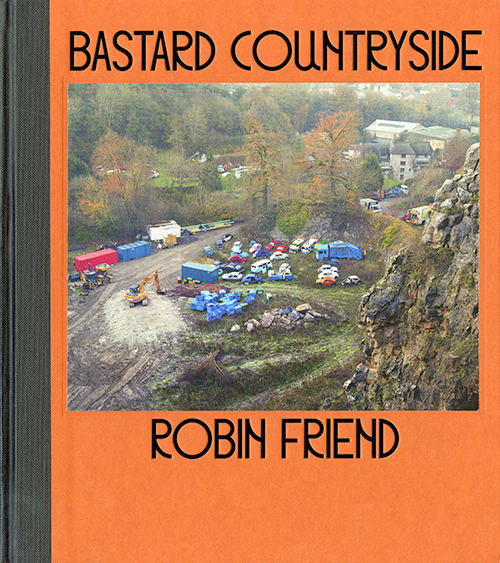| SIMON DENISON IMAGE & TEXT |
| PREVIOUS | NEXT |
BASTARD COUNTRYSIDE Robin Friend Loose Joints, 2018 ISBN 978-1-912719-04-4 Hb
The ‘bastard countryside’ of this book’s title refers to the result of mixing rural landscape with urban and industrial forces. When Victor Hugo originated the phrase in Les Misérables he was referring to marginal land at the edge of cities; but now, as Friend has pointed out, the phenomenon is ‘everywhere’. The subject has interested many writers, artists and photographers (including me). Friend’s treatment is frequently Surrealist, working with defamiliarisation and incongruity (a birch entwined with a pylon, a giant bonfire pile, a cascade of old cars dumped in a cavern), and with elements of Romantic sensibility to time passing (a derelict windmill, abandoned glasshouses, industrial relics overgrown by woodland). Artists notice things, as Grayson Perry suggested in his Reith Lectures a few years ago. Initially it seems that Friend has noticed well: the book contains many striking images. But some of his incongruities are too odd to be believed. Checking online – as none of this is declared in the book – Friend has admitted to manipulating colours, and that a stack of pink hay bales had its colours ‘pushed’ for aesthetic impact. Suspicions raised, elsewhere it looks like a field of grass has been coloured lavender, a mysterious glow seems to have been added to a shaft in a tunnel, numerous items are improbably blue, selective saturations and desaturations appear frequently. Such manipulations seem to affect some images, not all. Friend claims that ‘pushing colours’ is no different, in principle, from the accepted tonal adjustments of dodging and burning. I find it hard to agree. In changing colours he is creating signifiers with substantial semiotic force, inventing incongruities in a book that claims (chiefly by means of Robert Macfarlane’s essay) to be reporting on them. Perhaps this catches the post-truth mood of the moment; but the undisclosed mixing of genres, in a book presented as documentary, produces what Barthes called ‘the terror of uncertain signs’. I can’t trust that I know what I am being asked to look at. |
 |
|---|---|